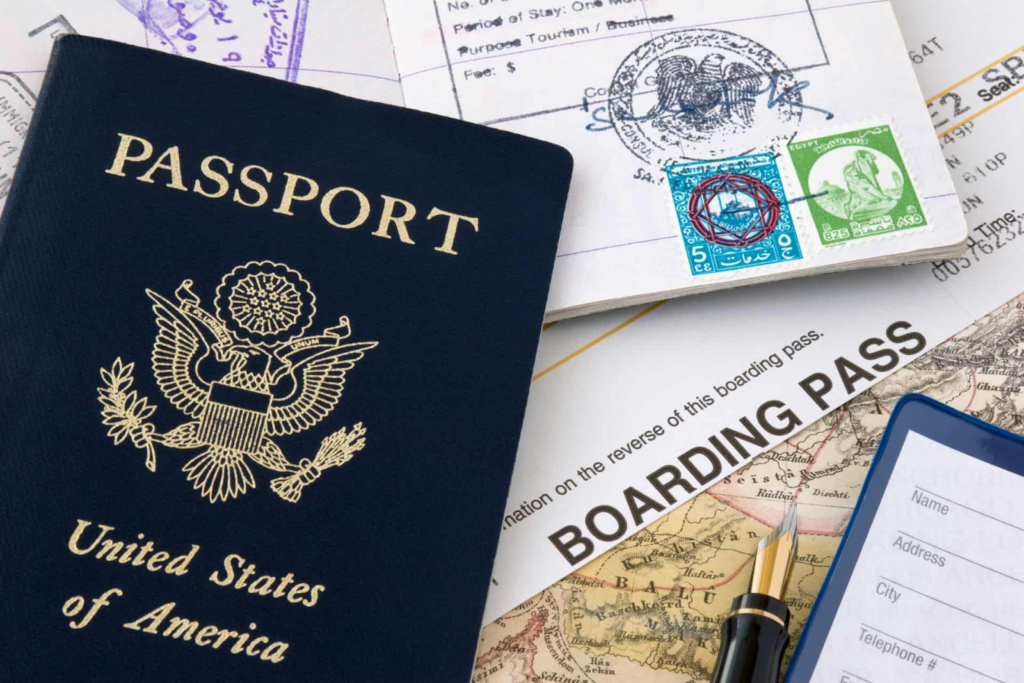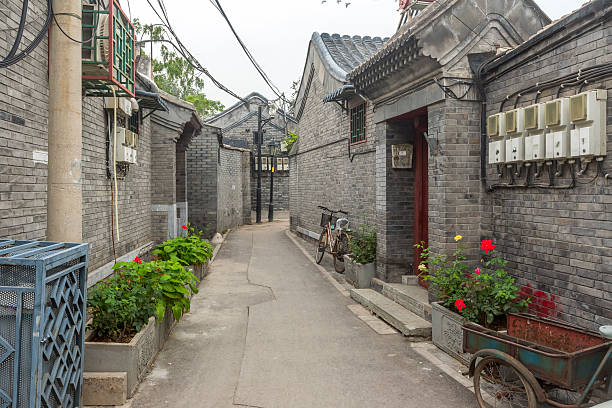Your guide for planning a trip to China
Stuck on how to plan your trip to China? We’ve got you covered with everything from must-see sights to practical travel tips so you can make the most of your trip.
With its incredible natural wonders — like the Zhangjiajie National Forest Park, the rice terraces of Yunnan, and the Huangshan Mountains — and even more interesting history, China is a must-visit.
At the same time, visiting a new place, especially one as vast and culturally diverse as China, can be daunting.
Not only do you have to deal with visa applications, travel permits, and logistics, but you also need to familiarize yourself with China’s social norms and prepare for the inevitable language barriers.
The solution: a detailed travel plan outlining your itinerary, including transportation and accommodation, and accounting for potential challenges — like downloading your WhatsApp alternative (WeChat).
In this guide, we show you how to plan a trip to China without feeling overwhelmed — it includes everything from essential visa information to navigating public transport, and from choosing the best time to visit to buying the best eSIM for China.
Here’s your six-point checklist to help you plan a China trip — so you have a stress-free vacation without the worry of missing out on key sights or activities like the acrobat show that was right next to your hotel!
1. Get your travel documents in order
When planning a trip to China, the first step is getting a visa. US citizens (children included) typically require a “tourist (L) visa” for leisure travel.
It typically takes up to ten days for the Chinese embassy to process a tourist visa. But, if you’re in a hurry, you can pay an additional fee for expedited processing and get your visa within three days.
You need to log into the China Online Visa Application (COVA) website to fill out the COVA forms and pay your processing fee which costs $140 (USD) for US citizens. And expedited service costs an extra $25.
Some documents required include your passport, a passport-size photo, proof of residence, and any previous Chinese visas.
If you’re a foreigner residing in the United States, then you also need to submit a photocopy of your green card or US visa to prove your legal residence in the country.
The good news: you no longer need flight tickets, hotel reservations, or even an invitation letter when applying for a Chinese visa. Apart from your visa, here are some other travel documents to keep ready for your trip to China:
- A passport with at least two blank pages and is valid for at least six months after your trip to China.
- Travel insurance that covers medical emergencies, trip cancellations, theft, and emergency evacuations.
- Medical records like vaccination certificates, prescriptions, and more.
Holafly top tip: If your China travel itinerary includes Tibet, then you’ll need a Tibet Travel Permit along with your passport and China visa. These are issued about 20 days prior to your tour start date, and can only be processed through a travel agency. If you plan to visit ‘unopened areas’ in Tibet, like the Mount Everest Base Camp in Shigatse, you’ll also need the Alien’s Travel Permit. It’s issued by the Public Security Bureau; you can apply for one after you arrive in Tibet (Lhasa).

2. Choose your destinations in China
The next step is to plan your China travel itinerary — the places you want to visit and the activities you want to try.
Are you interested in China’s natural wonders like the Zhangjiajie National Forest Park and the Yangtze River, or do you want to explore ancient Chinese culture by visiting sites like the Forbidden City and the Terracotta Army?
Some famous places to visit in China are:
- The Great Wall of China: You can explore sections of the Great Wall in multiple regions of China. We suggest visiting Mutiyanya (45 miles from Beijing) if you’re looking at a less-crowded experience, Juyongguan (37 miles from Beijing) for wheelchair access, and Jiankou (62 miles from Beijing) if you’re a serious hiker.
- The Forbidden City (Beijing): This was the imperial palace of the Ming and Qing dynasties from 1420 to 1912, and is quite a sight. There’s a daily visitor limit of 40,000, so book your tickets in advance.
- The Terracotta Army (Xi’an): This is a collection of life-sized clay soldiers, horses, and chariots that were buried with the first emperor of China to guard him in the afterlife. Again, there’s a daily visitor limit (8,000) so book tickets early.
- Lijiang Old Town (Yunnan): A UNESCO World Heritage Site, this town is renowned for its well-preserved Naxi architecture — wooden buildings, intricate bridges, and flowing canals — and the shamanic Dongba religion.

If you’re short of time, then we suggest the classic China tour — visiting Beijing, Xi’an, and Shanghai so you cover the top attractions. We also recommend:
- Guilin (and its otherworldly karst landscapes) for nature lovers
- Yangshuo, if you want to experience authentic Chinese village life
- Hangzhou to try some of China’s finest green tea
3. Select the best time to visit
It’s such a vast country that no matter when you plan a trip to China, you’re guaranteed an unforgettable experience.
However, the best time to visit China is during the shoulder seasons — either spring (March to May) or fall (September to November). The weather is pleasantly mild and there tend to be fewer crowds.
If you’re visiting China in the fall, we suggest timing your visit to coincide with the Mid-Autumn Festival (Mooncake Festival). You can take in lion and dragon dance performances, sample mooncakes (small, round pastries with sweet fillings), and even make your own lanterns.

Summer is usually super crowded as schools are out. And with most attractions having a visitor limit, reserving tickets for top attractions can get tricky.
Northern China experiences harsh winters with temperatures dropping below -4°F (-20°F) so going outdoors can be challenging.
However, if you’re on a budget and are fine with exploring just the southern region, then you can book your China tours for winter.
Just make sure to avoid the Chinese New Year which generally falls in late January or early February as public transportation can get chaotic with locals returning home for the celebrations.
4. Book your flights and accommodation
Once you’ve finalized your itinerary, the next step is booking your flights and accommodation. For the best deals, consider purchasing your flight tickets at least three months before your trip. You can also use a platform like Skyscanner or Kayak to compare costs.
Direct flights from New York City (East Coast) or Los Angeles (West Coast) to Beijing take around 11-13 hours. But it’s also the costliest option. To save on ticket costs, you can book international flights with layovers.
Similarly, we also recommend reserving your rooms in advance. And, you’ve got plenty of options — from luxury resorts and boutique hotels to traditional inns (kezhans) in centuries-old buildings. Depending on the city you visit, here are some areas to stay:
- Beijing: Wangfujing is within walking distance of popular attractions like the Forbidden City and Tiananmen Square and has great dining options.
- Shanghai: The Xuhui District is well-connected by public transport and is close to historical sites like the Longhua Temple.
- Xi’an: The Muslim Quarter is close to the Bell Tower and Drum Tower and the best street food in the city like roujiamo (Chinese hamburger) and yangrou paomo (lamb soup with flatbread).
Holafly top tip: China has an official hotel star rating system, ranging from 1 to 5 stars. According to their policies, international tourists to China can only stay in hotels that have a rating of more than 3.
5. Plan your transportation in China
China is a very well-connected country with major cities like Beijing and Shanghai having some of the longest metro lines in the world!
You also have plenty of options for inter-city travel including domestic flights, inter-city buses, and high-speed trains. Metro systems operate from around 5 AM to midnight, though this might vary during holidays.
You can buy your bus or metro tickets at vending machines. We also recommend getting yourself a China T-Union Transportation Card — it’s supported across 336 cities in China and can be used for both buses and metros.
You can get one at metro stations and even some convenience stores. You just need to pay a small refundable deposit — around $3 (¥20) — plus an initial balance for travel.
For train tickets, you’ll find self-service counters with English language options at the station. There are also manned ticket counters, but locals may not be fluent in English, so you might face communication challenges.
Alternatively, you can purchase your tickets beforehand using an app like Ctrip (Trip.com) and 12306 (the official railway app). Just make sure you’ve got a local China SIM card or eSIM to have this option available on the go.
For taxis, we recommend downloading the ride-hailing app DiDi. While they say they accept foreign credit cards, there have been issues. So, set up local payment systems like WeChat Pay and Alipay to avoid headaches
If you plan to rent a car when visiting China, then you’ll need a temporary Chinese Driving License — International Driving Permits (IDPs) aren’t enough.
However, the process is simple enough. Submit a copy of your passport, driving license, and a recent photo at the nearest DMV, and your license will be processed within an hour.
Whether you’re mapping routes, hailing rides, or buying tickets, reliable mobile internet is non-negotiable for your China trip. And for that, we recommend a China eSIM over a local SIM card.
An eSIM is easy to set up (just scan the QR code in your confirmation email), and has better plans when compared to the more traditional physical SIMs.
The best eSIMs for China, like Holafly, give you benefits like unlimited data and up to 500 MB of tethering for just $6.90 per day. And, if you’re staying longer — say two weeks — the cost goes down to $47.90 ($3.42 per day).
With Holafly, you can also get an eSIM for Shanghai or even a China + Hong Kong + Macau eSIM, ideal if your plan is to enjoy all these highly visited places.
6. Create a daily itinerary
Finally, when planning your trip to China, create a day-wise plan that includes everything from the attractions you want to visit to the restaurants you want to try.
Decide your mode of transportation and account for travel time (and traffic!) if you’re taking a car or cab. Then create a realistic, detailed travel itinerary for each day.
Not only is this great for time management, but it’ll also give you an idea of how packed (or free) your day is so you can fill it with something interesting. For example, if you have an hour or two to spare, we suggest filling them by:
- Stopping at a local tea house in Caochang Hutongs (Beijing) for a traditional tea experience.
- Book a local guide and go on a private tour to explore authentic Chinese food in Beijing’s many Hutongs (lanes where locals still live).
- Exploring China’s political past during the Mao era at the Propaganda Poster Art Centre (Shanghai).
- Checking out the boutique shops, cafes, and art galleries in Wudaoying Hutong (Xi’an).
Apart from the FOMO attractions, there are endless culturally immersive and unique experiences — from acrobat shows to private Kung Fu workshops — and they all take only a couple of hours. Depending on your interests, add a few of these to your China travel itinerary for a trip that’s perfectly you.

Some final advice on planning your trip to China
China, though an incredibly wonderful country, can be quite challenging for first-time visitors. Particularly the “Great Firewall” which restricts access to certain apps including WhatsApp, Google Maps, YouTube, and Instagram when using your cell phone in China.
So, make sure to download alternative local apps like Baidu for search, WeChat for VOIP calls, and Alipay for online payments.
The other alternative is purchasing a VPN to bypass the firewall, although this isn’t always guaranteed to work.
The simplest way to go around that is to purchase your Holafly eSIM with built-in VPN when planning your China travel itinerary — so you’re connected from the minute you land to the minute you have to say bàibài — on that note, bye-bye for now!





 Language
Language 


















 No results found
No results found













